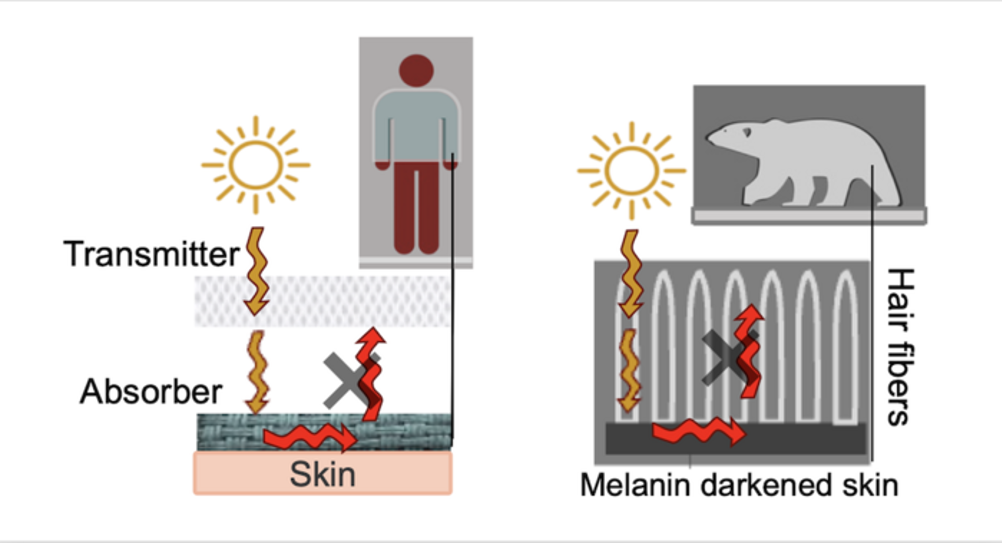The results, published in ACS Applied Materials and Interfaces, are being developed into commercially available products.
Polar bears endure temperatures as low as -46°C, and they have many adaptations that allow them to thrive when the temperature plummets.
According to UMass Amherst, one of the major discoveries of the last few decades is that many polar animals use the sunlight to maintain their temperature. Scientists understand that part of the bears’ secret is their white fur, which transmits solar radiation toward the bears’ skin.
“But the fur is only half the equation…The other half is the polar bears’ black skin,” said the paper’s senior author, Trisha L. Andrew, associate professor of chemistry and adjunct in chemical engineering at UMass Amherst.

Andrew said polar bear fur is essentially a natural fibreoptic, conducting sunlight down to the bears’ skin, which absorbs the light. The fur is also good at preventing the now-warmed skin from radiating out warmth.
Andrew and her team have engineered a bilayer fabric whose top layer is composed of threads that conduct visible light down to the lower layer, which is made of nylon and coated with PEDOT, a dark material that warms efficiently.
A jacket made of such material is said to be 30 per cent lighter than the same jacket made of cotton yet will keep the wearer comfortable at temperatures 10o C lower than the cotton jacket could handle, as long as the sun is shining, or a room is well lit.
“Space heating consumes huge amounts of energy that is mostly fossil fuel-derived,” said Wesley Viola, the paper’s lead author, who completed his PhD in chemical engineering at UMass and is now at Soliyarn, Andrew’s startup. “While our textile really shines as outerwear on sunny days, the light-heat trapping structure works efficiently enough to imagine using existing indoor lighting to directly heat the body. By focusing energy resources on the ‘personal climate’ around the body, this approach could be far more sustainable than the status quo.”
The research was supported by the US National Science Foundation, and production of the PEDOT-coated cloth is underway at Soliyarn.











IET sounds warning on AI doll trend
I agree that we need to reduce cooling water demand for servers. And yes, generative AI consumes a large amount. But what about BitCoins? Their...